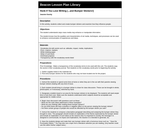
In this lesson students will collect and create bumper stickers to examine how writing can influence people.
- Subject:
- English Language Arts
- Material Type:
- Lesson Plan
- Provider:
- Beacon Learning Center
- Author:
- Jeannie Overby
- Date Added:
- 02/26/2019

In this lesson students will collect and create bumper stickers to examine how writing can influence people.
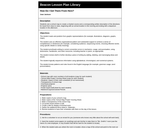
In this lesson students use a school map to create a charted course and a corresponding written description of the directions for travel from class to class, beginning with an arrival location in the morning and ending with a departure location in the afternoon.

In this lesson students analyze comics for samples of logical, emotional, and ethical appeal (ethos, logos, pathos). Students then write a paragraph for each selected comic strip explaining how the comic strip represents the use of each rhetorical appeal.
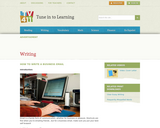
An interactive resource on writing business emails.
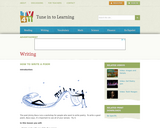
In this interactive lesson students will learn the basics of how to write their own poem by matching words with one of the five senses, identifing how the senses are used in writing, writing a poem, and using details.

Featuring the India Arie song "I Am Not My Hair," this lesson takes students through the pre-writing, production, and editing phases of an informative essay.

In this reflective essay, Chief Dan George compares his native North American culture with that of white culture. In this CCSS lesson, students will explore this essay through text dependent questions, academic vocabulary, and writing assignments.
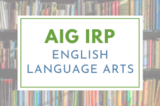
In this lesson, students will read and listen to/view a speech by Jesse Jackson during the 1988 Democratic National Convention. Students will deeply analyze the speech for content and purpose, focusing on the relevancy and effectiveness of Jackson’s personal story that he uses to conclude his speech. Students will analyze how this concluding section contributes to the whole speech and to the development of ideas expressed throughout the speech. Students will then independently complete a RAFT assignment in which they may self-select the Role, Audience, and Format; all students will have the same topic – reaction to hearing the speech. The RAFT writing will further explore the impact of the personal testimony on the speech as a whole. This lesson was developed by NCDPI as part of the Academically and/or Intellectually Gifted Instructional Resources Project. This lesson plan has been vetted at the state level for standards alignment, AIG focus, and content accuracy.

This lesson will use the "infinite variety" of resources on the Internet to let students find their own image of Othello. The lesson will take them on a WebQuest, first to textual references, and then to on-line searches for images of Othello in film, play productions, and art. Then, students will write an essay about the casting of Othello to conclude the lesson.

Jabberwocky is an epic poem told through nonsense words. The poem relates a father’s quest for his son that involves the slaying of a beast (The Jabberwock). The poem charts the son’s progress from his departure to his successful return. In this CCSS lesson, students will explore this poem through text dependent questions, academic vocabulary, and writing assignments.

This autobiographical piece tells what a neat, tidy rule-follower this author was in his youth—except for his yo-yo. In this CCSS lesson, students will explore this story through text dependent questions, academic vocabulary, and writing assignments.
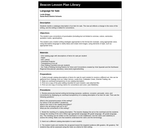
In this lesson students rewrite a catalogue description of an item for sale in which the new ad reflects a change in the voice of the writing.

Students will read background information, a passage, information, vocabulary words, and vocabulary in context. Students will write answers to questions, quotations to support a main idea, and a response to a prompt. This resource supports English language development for English language learners.

Students will read "The Road Not Taken," and writes to analyze it for its figurative meaning. This resource supports English language development for English language learners.

Students will read a description of and passage from L. Frank Baum's work, characters' descriptions, questions, vocabulary, definitions, text excerpts, and a writing prompt. Students will write short answers, quotations to support a main idea, and an essay. This resource supports English language development for English language learners.

Students will read a description of a conclusion and a passage about Hawaii. Students will then write a conclusion for the passage. This resource supports English language development for English language learners.

Students will read a passage about the U.S. census and write a conclusion for the passage. This resource supports English language development for English language learners.

Students will read a description of and passages from one of President Kennedy's speeches in 1962. Students will then write a conclusion for the speech. This resource supports English language development for English language learners.

Students will read a noun and a thesis statement, and use them to write an introduction to an essay. This resource supports English language development for English language learners.